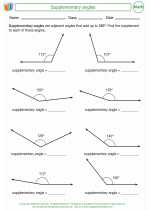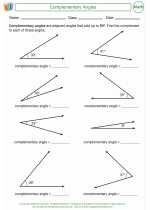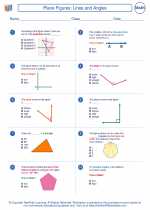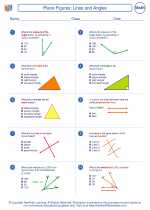Plane Figures: Lines and Angles -> sine
Sine Function
The sine function is a fundamental trigonometric function that represents the ratio of the length of the side opposite an acute angle in a right-angled triangle to the length of the hypotenuse. In a right-angled triangle, if θ is one of the acute angles, then the sine of θ is defined as the ratio of the length of the side opposite θ to the length of the hypotenuse.
The sine function is typically denoted as sin(θ), where θ represents the angle. It is a periodic function, meaning it repeats its values in regular intervals. The sine function has a range between -1 and 1, and its graph is a wave-like curve.
Key Points to Remember:
- The sine function is defined as the ratio of the opposite side to the hypotenuse in a right-angled triangle.
- The sine function is denoted as sin(θ) and represents the value of the function at angle θ.
- The sine function has a range between -1 and 1.
- The graph of the sine function is a wave-like curve that repeats its values in regular intervals.
Properties of the Sine Function:
- The sine function is an odd function, meaning sin(-θ) = -sin(θ).
- The sine function has a period of 2π, which means it repeats its values every 2π units.
- The sine function is periodic, with a period of 2π, and it has an amplitude of 1.
Common Sine Values:
| Angle (θ) | Sine Value (sin(θ)) |
|---|---|
| 0° | 0 |
| 30° | 1/2 |
| 45° | √2/2 |
| 60° | √3/2 |
| 90° | 1 |
Applications of Sine Function:
The sine function is used in various fields such as physics, engineering, and architecture to model periodic phenomena like sound waves, light waves, and oscillatory motion. It is also used in navigation and in the study of periodic functions and waves.
Study Guide:
To understand the sine function, it's important to practice using it in different contexts. Here are some key steps to study the sine function:
- Understand the definition of the sine function and how it relates to right-angled triangles.
- Practice finding the sine of various angles using a calculator or trigonometric tables.
- Explore the properties of the sine function, such as its periodic nature and range.
- Work on graphing the sine function and understanding its wave-like behavior.
- Apply the sine function to solve real-world problems and understand its practical applications.
By following this study guide and practicing the concepts, you can develop a strong understanding of the sine function and its significance in trigonometry and mathematics.
.◂Math Worksheets and Study Guides Seventh Grade. Plane Figures: Lines and Angles

 Activity Lesson
Activity Lesson
 Activity Lesson
Activity Lesson
 Worksheet/Answer key
Worksheet/Answer key
 Worksheet/Answer key
Worksheet/Answer key
 Worksheet/Answer key
Worksheet/Answer key
